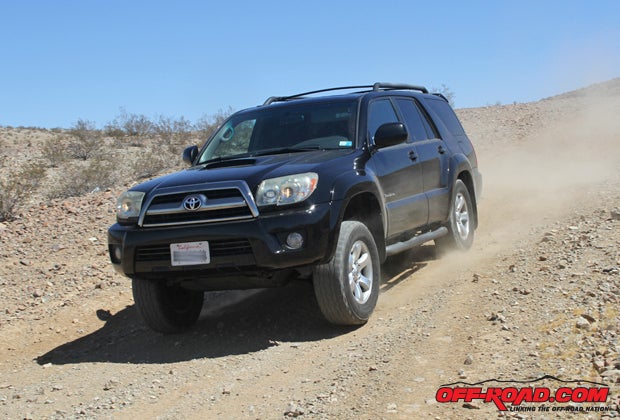
When the performance of the shocks on your truck or SUV starts to fade and you’re looking to replace them there are a number of options to consider. The first thought might be heading to the dealer for a direct replacement part, but that path is likely not going to be a cheap one. There’s also the option to make the jump to an upgraded coilover or remote-reservoir shock, but although a high-end off-road shock will improve performance it can also be a serious investment.
There’s another alternative that falls somewhere between the two options above. The aftermarket offers multiple direct-replacement options that not only will get your rig’s suspension back up to speed but also might actually help improve the off-road performance without breaking the bank. Bilstein’s 5100 Ride Height Adjustable shocks certainly fit that description. The 5100s – known for years by off-roaders as a quality shock that won’t break the bank – not only offer quality off-road performance, but they also offer the option to adjust the front of the vehicle’s ride height as well.

Monotube vs. Twin-Tube
Bilstein relies on a monotube design for its 5100 versus a twin-tube setup. Twin-tube shocks are commonly used on trucks and SUVs to offer good all-around performance in what is typically a fairly cost-effective option. Monotubes tend to be a little bit more expensive (although not by much), but they are more often relied upon in situations where a higher level of performance is required because of their ability to more effectively dissipate heat and handle more powerful loads.
There’s far more to the conversation of twin-tube versus monotube, but in short, twin-tube shocks rely on two separate tube chambers, with the main center chamber featuring a piston that moves up and down through hydraulic fluid, while the outer tube serves as a reservoir filled with air, or more commonly nitrogen gas, to provide damping force as the hydraulic fluid flows in and out of the chamber. The fluid and gas in a twin-tube shock are not fully separated, and under heavy performance the oil can start to cavitate, or mix with the air to form air bubbles, which reduces its ability to provide consistent resistance and support for the piston as it moves up and down inside the shock body.

A monotube shock, as the name denotes, still features fluid and gas but they live within the same single-cylinder space and are separated by a piston seal. The monotube design accommodates a larger piston and has additional space for more hydraulic fluid for the piston to move through. On the other side of that piston seal, gas helps absorb the force of the piston’s compression to provide damping force, and ultimately the valve assembly acts as one single unit. Thanks to the additional oil volume, heat can dissipate faster in a monotube shock and it is less prone to performance fade (due to the oil heating) in high-performance situations, like when off-roaders are powering through very bumpy terrain and the shocks are working overtime. The additional hydraulic fluid volume and larger piston essentially provides the monotube with a higher performance threshold.
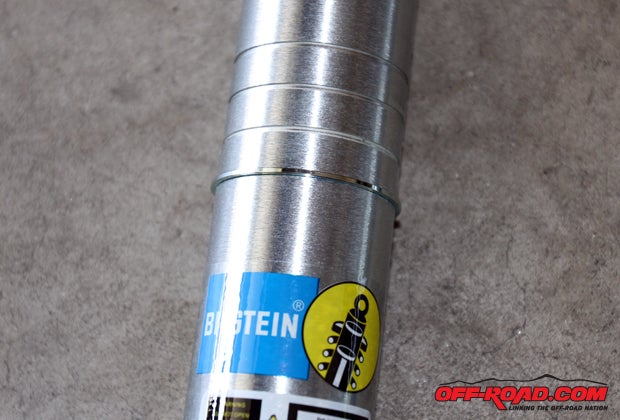
Although we’d be installing shocks on our fourth-generation 4Runner, Bilstein actually offers its 5100 for multiple truck and SUV models, and each shock is tuned specifically for each vehicle. Bilstein relies on a digressive piston design in the 5100 to offer consistent performance in varying conditions. For added durability, it uses a Zinc coating on the 5100 shock body for added protection from the elements.
One of the features that off-roaders love most about the 5100s is the ability to adjust vehicle ride height, because these shocks eliminate the need for coil spring spacers and can lift the front end of coilover-equipped stock vehicles up to 2.75 inches on some applications (on our 4Runner the max height is 2.5”). The nose-down rake most stock vehicles have straight from the factory can be eliminated, or the truck or SUV can be lifted even higher for additional ground clearance and/or to accommodate larger tires.
The 5100s actually utilize the stock coils of your vehicle, and thanks to an adjustable circlip that supports the spring collar, you can select one of four height settings on the 5100 Series shocks. For our fourth-gen 4Runner, these height settings include: stock height, .85” of lift, 1.75”, or 2.5”.
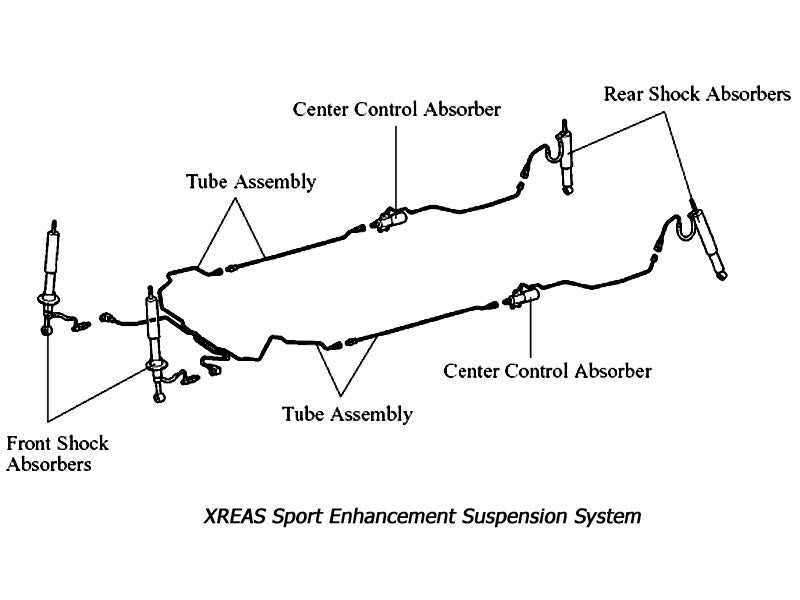
The 5100s are a direct replacement part and the installation is something the garage mechanic, with the proper tools, can tackle in a few hours. For the case of our fourth-gen Sport Edition 4Runner, the job took just an extra hour or so because of an added obstacle: the X-REAS system. Toyota offered the X-REAS, or X-Relative Absorber System, as an option on third- and fourth-generation 4Runners or as a standard suspension offering on Sport models. The system uses lines to transfer hydraulic fluid from shock to shock to improve handling, and reduce body sway, in turns by transferring the oil to whichever corner needs it most. Since our 4Runner was purchased used with a decent number of miles on the odometer, we really have no idea how fresh or worn out the system is, but the servicing of the system requires the servicing of the shocks as well, so it’s not a cheap or simple fix or replacement.
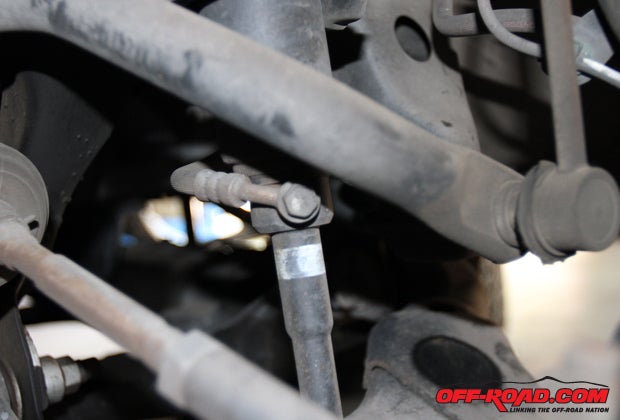
The good news is removing the X-REAS System is pretty simply, and there’s no real downside to doing so if you plan to replace the shocks with something like a 5100 (in fact, it’s pretty much necessary to remove). Just keep in mind you’ll need to replace the shocks at all four corners. The X-REAS system is only attached to the shocks and there’s no electronic connection to the computer, and the removal of the system won’t kick up any warning lights on the dash. The lines do contain hydraulic fluid that runs from the shocks and is distributed via center control absorbers (funny enough, manufactured by Yamaha), and it can be messy when you remove the system so keep a container for drainage close by.
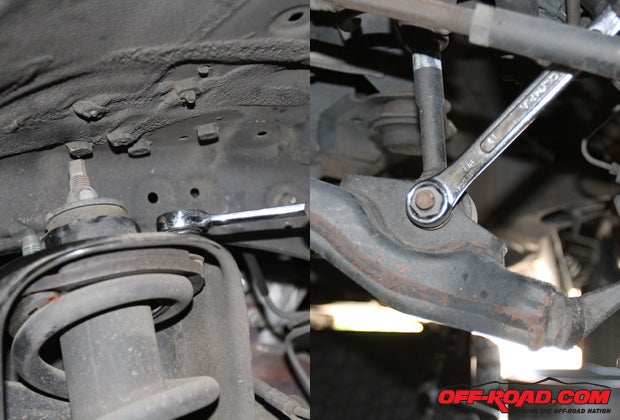

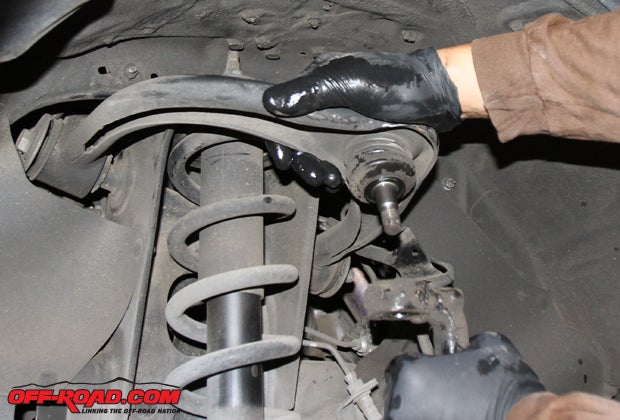
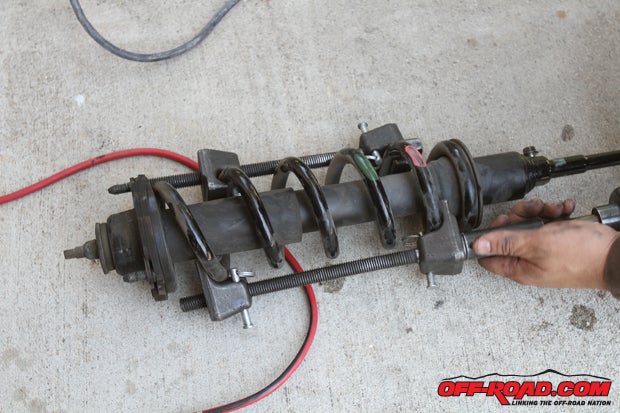
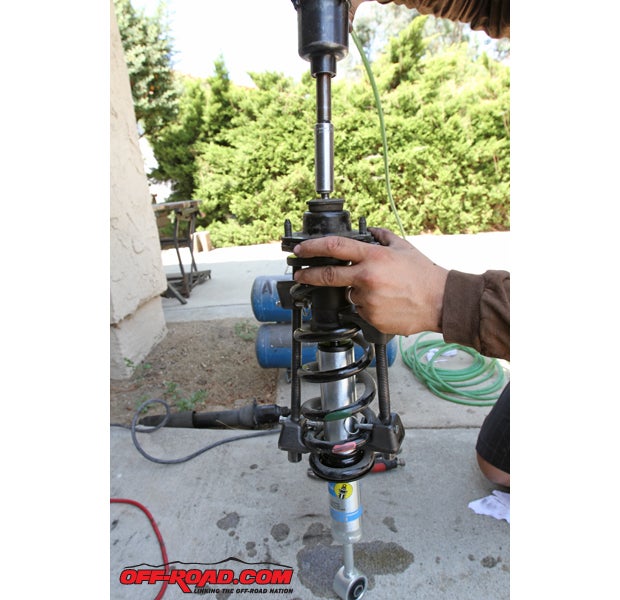
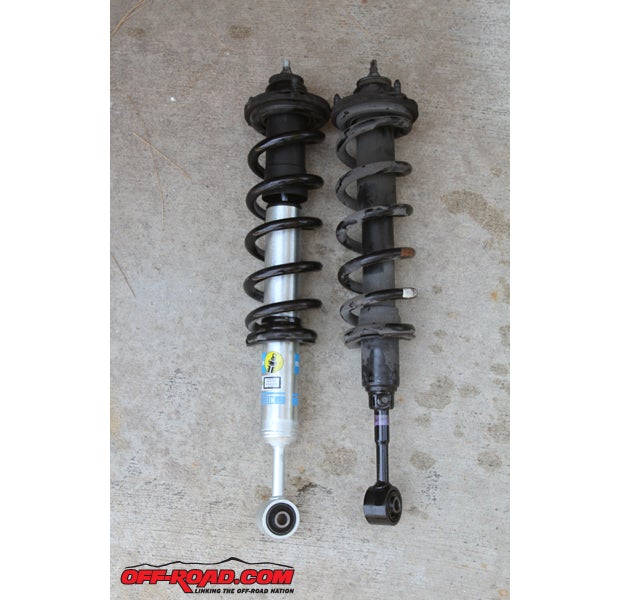

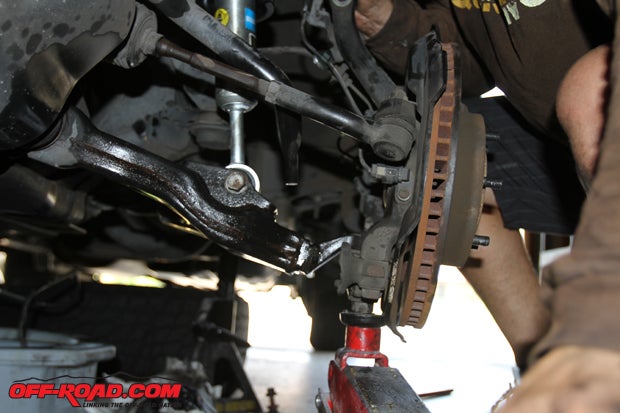
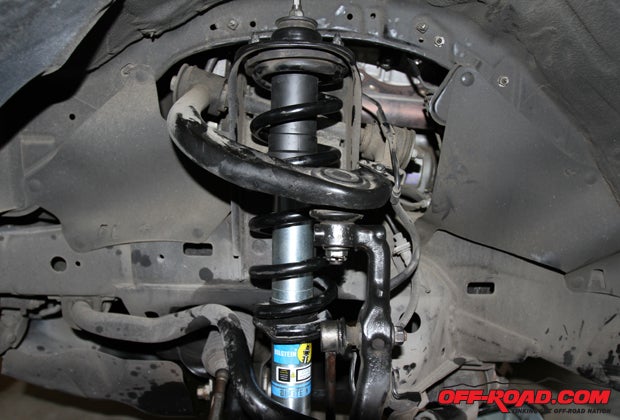


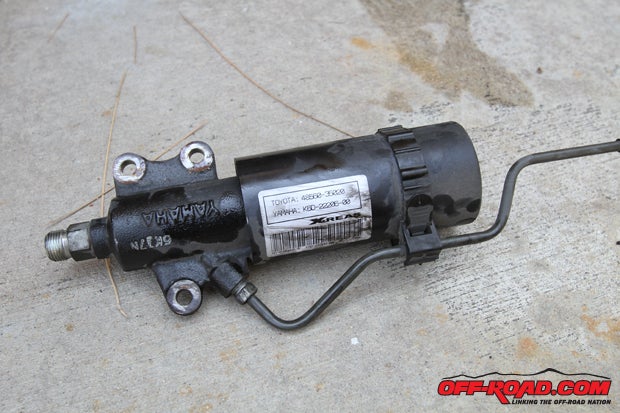
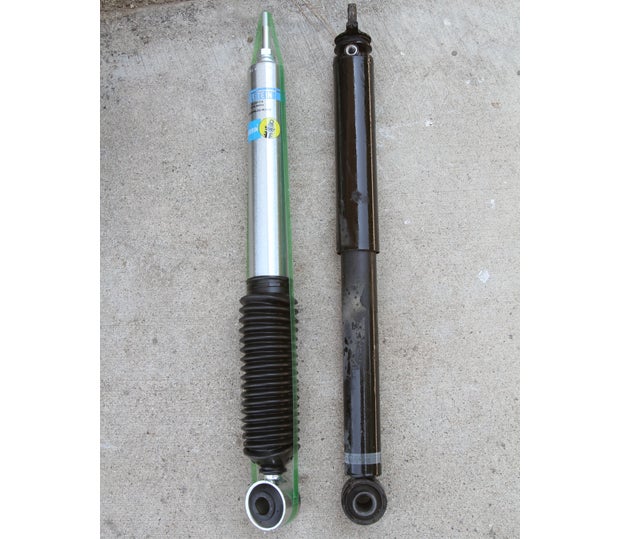
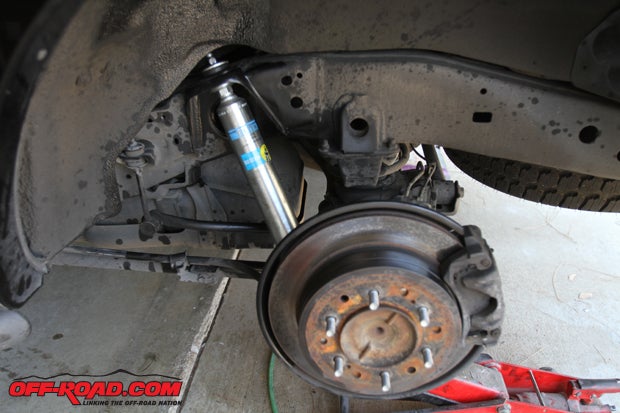
After double checking the tightness of every bolt, we reinstalled the wheels and were ready for a test-drive. The Bilstein 5100s are an immediate improvement even on the highway, as our worn-out suspension was just too soft to provide a good all-around driving experience. The monotube Bilsteins provided some additional lift to reduce the nose-down stance of the 4Runner, and we appreciate the firmer ride the shocks provide. Off of the highway, the additional clearance (even though we only used the first lift setting) was immediately noticeable, and the firmer shocks help soak up bumpy terrain far better. The only slight downside for some might be a stiffer on-road ride. We notice the ride is a little stiffer on the highway, and our only gripe is the rear is just a hair stiffer than we’d like on some bumpy roads. Overall, though, the Bilsteins offer a great improvement in performance and were an easy way to lift the nose of our vehicle.
Whether needing to add additional lift to the front of your vehicle for added ground clearance or to fit larger tires, the Bilstein 5100 shocks are a great option to easily improve off-road performance and provide an alternative to coil spacer kits. If it’s a job you don’t care to tackle yourself, most reputable off-road shops can perform the installation for somewhere in the $200-$300 range, so even with the cost of the shocks it won’t break the bank to improve your vehicle’s stance and off-road performance in once shot.
CONTACT
Bilstein
BilsteinUS.com


 Your Privacy Choices
Your Privacy Choices